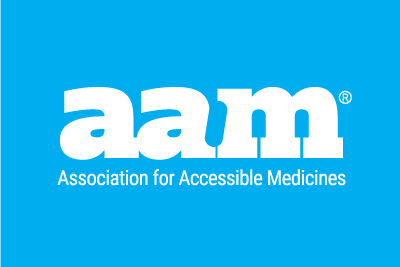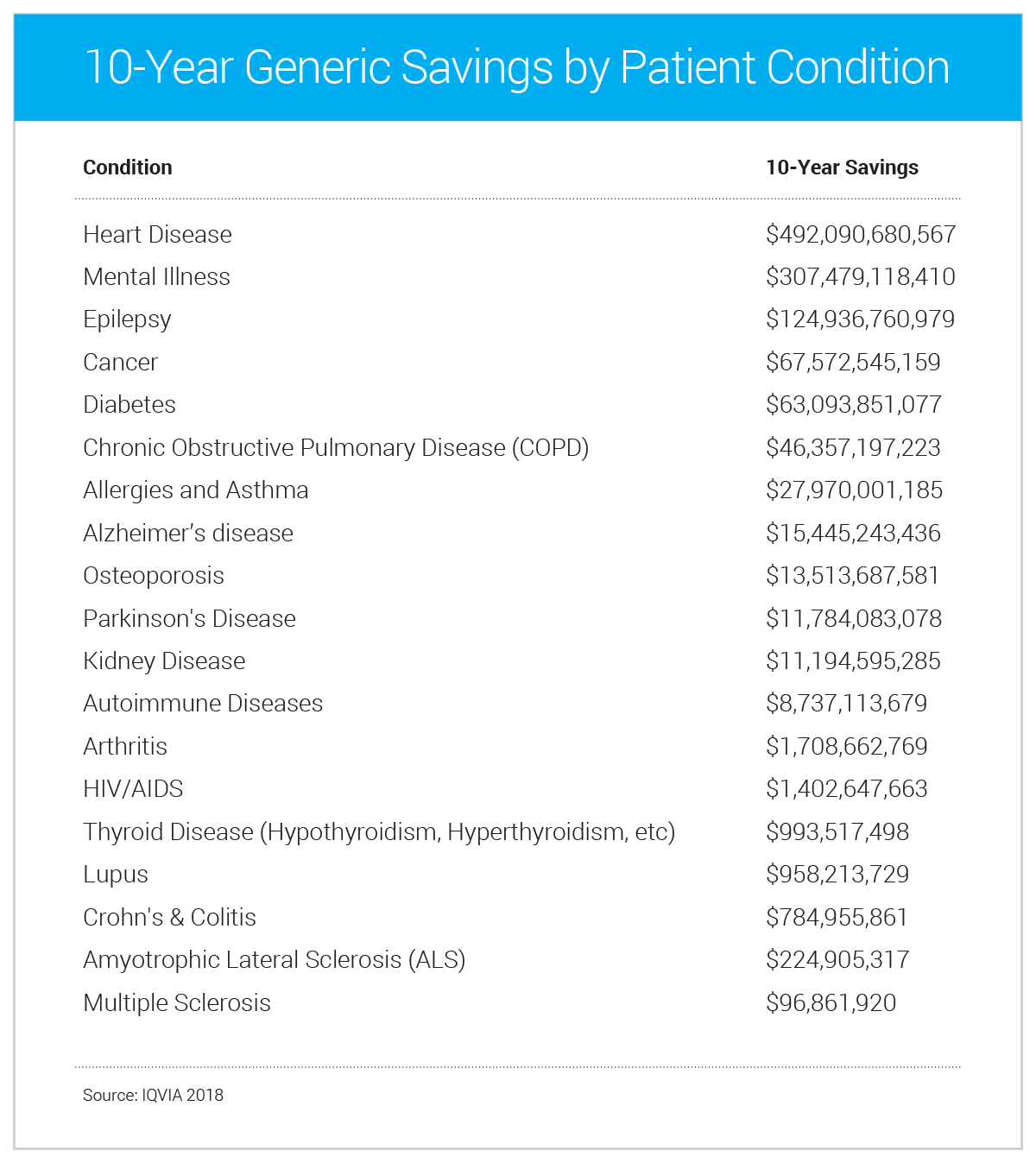America’s patients can now see how much they save by treating their health conditions using generic drugs thanks to new data pulled from this year’s Generic Access and Savings Report in the United States. For the first time ever, the Association for Accessible Medicines (AAM) is releasing savings data for 20 common patient conditions, demonstrating the tremendous value that generics bring year over year to the individual patient communities who collectively represent tens of millions of American patients.
According to the Access & Savings Report, in 2017, nine out of every 10 prescriptions in the U.S. were dispensed using generic drugs. Ninety-three percent of those prescriptions were filled at $20 or less, and the average co-pay for a generic drug was just $6.06. When both brand and generic versions of the prescribed medication were available, the generic was chosen 97 percent of the time, resulting in significant savings for patients treating their Alzheimer’s, Parkinson’s, diabetes, COPD, epilepsy, allergies and asthma, and numerous others.
We’ve compiled those savings into patient savings sheets for 20 conditions with data produced for AAM by the IQVIA Institute for Human Data Science. For example, patients can see their savings for:
- Heart Disease: Generics saved patients $47 billion in 2017, and savings for the past 10 years total $492 billion
- Mental Health: Generics saved patients $48 billion in 2017, and savings for the past 10 years total $307 billion
- Cancer: Generics saved patients $10 billion in 2017, and savings for the past 10 years total $67.5 billion
In addition to a breakdown of one-year savings and 10-year savings, patients can also see their generic savings for common co-morbidities of each of these conditions, including:
- Arthritis: Forty-seven percent of patients also take medications for diabetes, and generic medicines saved $338 million
- Crohn’s and Colitis: Twenty-eight percent of patients also take medications for hypertension, and generic medicines saved $84 million
- Autoimmune Disease: Thirty-three percent of patients also take medications for depression, and saved $1.8 billion
Biosimilars promise additional savings for other complex conditions. Just as generics offer savings over brand-name drugs, these safe, effective alternative versions of biologic medicines promise to improve the quality of life for America’s patients while at the same time saving the health system billions of dollars.
We’ve told the stories of individual patients and families whose lives have been positively impacted by access to life-changing medications. But this is the first time we’re showing the whole picture of the impact that generic drugs have on entire populations of patients suffering from kidney disease, lupus, osteoporosis, MS and other prevalent conditions, and the saving that generic usage has generated for those patient populations over the last decade. We hope you find this new resource valuable to your own advocacy efforts.
By Sara Skubikowski, AAM Director of Strategic Alliances
Methodology
Disease-State and Comorbidity Selection Methodology
AAM contracted with health policy consulting firm Avalere to conduct the mapping of products to specific conditions. Avalere conducted the clinical review by assigning each generic product to a list of medical conditions. Using high-quality and reliable drug information databases (for example, Lexicomp Online and Micromedex 2.0) and expertise from a clinical pharmacist, Avalere mapped the products to medical conditions using their approved therapeutic indications. The generic products were further stratified by assigning comorbidities using published epidemiological data to determine the three most common associated medical conditions.
This approach allowed for an accounting of the patient savings for each medical condition. As a general rule, direct savings for any of the listed medical conditions includes all products with an indication for that medical condition. As such, the savings may be driven by any product with an indication for that specified condition and not necessarily the most common treatment. Savings do not account for the frequency in which providers prescribe each product for an approved or unapproved medical condition.





